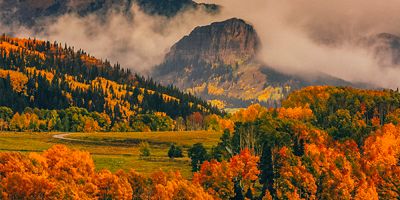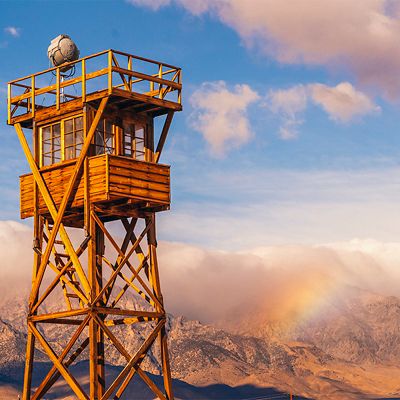What comes to mind when you hear “national park?” For most people, it’s a grand, wild landscape in a remote area, such as Yosemite or the Glacier. But those marquee parks are just the tip of the iceberg in our national park system. The National Park Service (NPS) encompasses more than 400 sites, including historic sites, battlefields, seashores, and monuments—and many of them are a lot closer to home than you might realize.
The country’s best urban parks offer quiet trails, deep woods, sweeping views, and peaceful waters, just like their more famous counterparts. And because they’re located close to millions of Americans, they’re much more accessible everyday escapes. No need to book a plane ticket or reserve a permit six months in advance; these 10 standout national park units are ready to welcome you for after-work walks and impromptu weekend picnics. And if we didn’t name an urban park near you, check out the NPS’s Find a Park tool: You might just discover your new favorite hometown destination.
East Coast
Boston Harbor Islands National Recreation Area, MA
Time from Boston: 30 to 45 minutes on the ferry
Public transit options: Several bus lines serve the two ferry terminals.
Spread across 34 islands and peninsulas, this park just southeast of Boston—jointly managed with the state park system—offers a mix of nature and history. You can sea kayak, hike, swim, or camp in a tent at sites here, but also see a Civil War-era fort or tour lighthouses on a cruise. Expect to explore swimming beaches, rocky coastline, and open meadows where deer and turkey make their homes. Several of the islands are accessible via public ferry during the warmer months, but visitors can also boat and sail to others, and a few sites are found on the mainland, too.
Fire Island National Seashore, NY
Time from Manhattan: 1 hour, 40 minutes by car; roughly 2 hours by train/ferry
Public transit options: Long Island Railroad runs from Penn Station to several access points, including three mainland ferry terminals.
On this barrier island off the southern shore of Long Island, you’ll find salt marshes, eelgrass beds, sugary sand dunes, a unique maritime holly forest—and a front-row seat to the Atlantic Ocean. A variety of wildlife make their homes here, including red fox, finback whales, harbor seals, and nesting piping plovers. Naturally, many outdoor activities here center around the water, from swimming to fishing for striped bass to boating and paddling or simply wandering miles of the beach. You can also backcountry camp among the grassy dunes (tent camping is available at adjacent Smith Point County Park, too).
Gateway National Recreation Area, NY/NJ
Time from Manhattan: From 1 hour, 10 minutes (bus to Staten Island) to 1 hour, 30 minutes (car to Sandy Hook)
Public transit options: Gateway’s many different sites are accessible by bus, subway, and ferry.
It’s tough to get much closer to New York City’s developed core than Gateway, which consists of three units around the bays between New York and New Jersey: two in Queens/Brooklyn and Staten Island, and one in Sandy Hook, New Jersey. The three sites feature a variety of oceanfront ecosystems, like beaches, salt marshes, and woodlands, habitat for everything from muskrats and harbor seals to foxes and diamondback terrapins. It’s an excellent birding spot—look out for oystercatchers and osprey—as well as a great place to canoe, kayak, fish, swim, and bike. You can even sleep under the stars at the Sandy Hook unit’s campground.
Great Falls Park, VA
Time from Washington, D.C.: 35 minutes by car
Public transit options: The Metro can get you within 5 miles, but you’ll need a cab from there.
This oasis in the D.C. metro area hugs the banks of the Potomac River where it spills over a jagged garden of rocks to form Great Falls. Hiking trails lead along the river, atop cliff bands, and through the woods, sometimes passing the ruins of a once-thriving town started in 1790. You can also spot remnants of an 18-century canal system overseen by George Washington. Today, Great Falls Park is a notch in the belt for advanced whitewater kayakers (the Potomac here ranges from Class II to V+) and rock climbers. More casual visitors can scope wildflowers and look for beavers and bald eagles.










